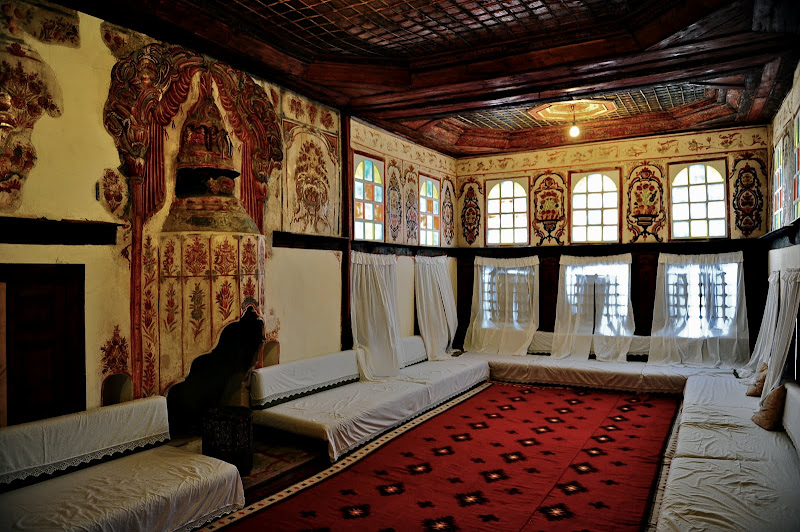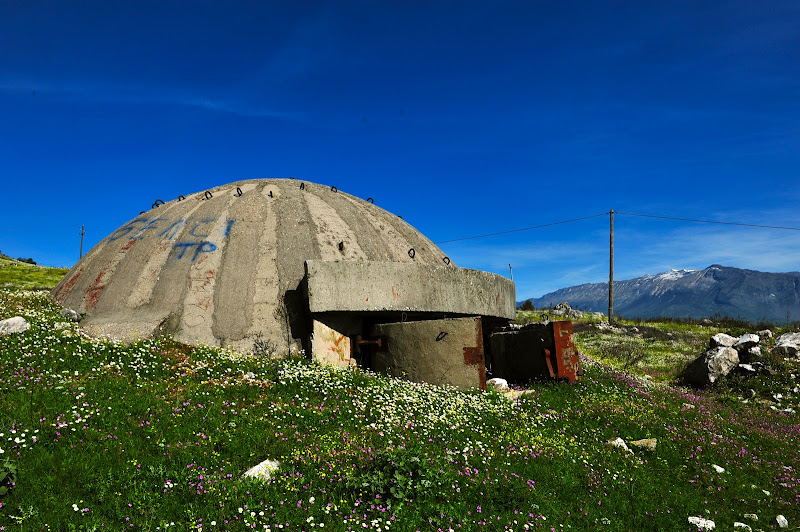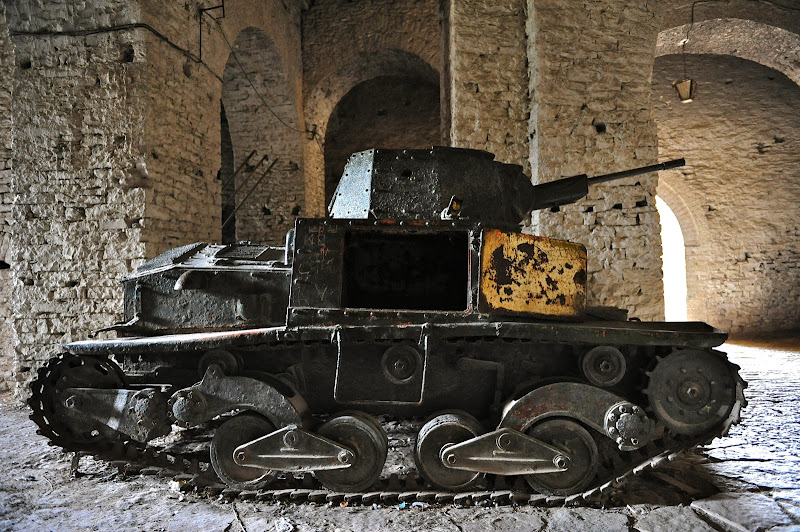Zamokot Samuil is all about the view. Walking the ramparts, it’s hard to force your gaze inward to the crumbling walls and tin shacks that populate the castle’s courtyards. Instead, look out over the bristle of pines to the slate-grey waters and the snowy peaks beyond. It’s one of the great ancient vistas in the world.
All of us - tourists from Slovenia, Holland, Macedonia and the two of us - were entranced by the water. From on high, the rippling patterns on the surface made the lake seem vast and infinitely complex.
Tzar Samuil built the fortress during Ohrid's peak, when it was serving as the capital of the First Bulgarian Empire. The old town – a hilly stretch of waterfront on a pretty curve in the lake – was originally ringed by lower town walls, with the castle serving as the last means of defense. The town’s population was contained inside these walls until the Ottomans conquered the region in 1395 and began building around the outside.
Little is left of the lower walls, except a few gates and stretches of stonework. Here, at the “upper gate,” the old doorway and small bastions remain, complete with rusting embellishments and weedy firing slits. Traffic rumbles through the narrow opening at great speed, tires chattering on cobblestones, pedestrians ducking out of the way.
From below, the fortress isn’t very impressive - the huge flag almost makes more of an impression. But it's atmospheric and the rebuilt ramparts are a pretty addition to the cities skyline. The truth is that Macedonia, although littered with ruins, has very little in the way of surviving fortresses. Because the country sits at a vulnerable spot in between tectonic plates, there's a long history of earthquakes; even the thickest walls eventually tumble if they're shaken too many times. The restoration job was heavy handed, but Ohrid is Macedonia's prime tourist destination and tourists love a castle.
Diminished by distance into a simple, forested line, the far coasts seem untouched by time. The walls too, and the mountains that ring the water. With a light breeze drowning out the sounds of town and the sun clanging off the stones, it’s easy to lose touch with the senses of the present. It’s easy, too, to imagine that nothing’s changed on these walls, that the year is somewhere around 1000, when Tzar Samuil reigned. Even if it’s not the most fascinating fortress, Ohrid provides a backdrop that can’t be faulted.
The castle is one of the oldest and most well known in the Balkans, built on the site of an earlier Byzantine castle that was likely pre-dated by another, 3rd century BC fortress. It’s a massive-walled, very wide structure that’s mostly been ruined and partly been restored. While the walls have been reconstructed to some degree, the inner keep and some old towers exist only as bare foundations. The gate fortifications have held up, and are impressively sturdy. This main entrance faces outward toward the water and the steepest stretch of hillside, where now there are a few souvenir sellers in the shade and a cooler or two of water and soda.
It seems funny that a castle in Macedonia would have more visitors than any we’ve been to recently, but that was the case. Sunday daytrippers and tourgroup biddies clutched at the handrails and huffed up the steps. Little crowds formed at the most picturesque points, as people waited their turn to take a photo. Usually, I’m not all that keen on excessive safety precautions at castles like this – one of the delights of travel in Eastern Europe is that nobody impedes you from taking a bad spill – but there were so many people that the railings were necessary.All of us - tourists from Slovenia, Holland, Macedonia and the two of us - were entranced by the water. From on high, the rippling patterns on the surface made the lake seem vast and infinitely complex.
Tzar Samuil built the fortress during Ohrid's peak, when it was serving as the capital of the First Bulgarian Empire. The old town – a hilly stretch of waterfront on a pretty curve in the lake – was originally ringed by lower town walls, with the castle serving as the last means of defense. The town’s population was contained inside these walls until the Ottomans conquered the region in 1395 and began building around the outside.
Little is left of the lower walls, except a few gates and stretches of stonework. Here, at the “upper gate,” the old doorway and small bastions remain, complete with rusting embellishments and weedy firing slits. Traffic rumbles through the narrow opening at great speed, tires chattering on cobblestones, pedestrians ducking out of the way.
From below, the fortress isn’t very impressive - the huge flag almost makes more of an impression. But it's atmospheric and the rebuilt ramparts are a pretty addition to the cities skyline. The truth is that Macedonia, although littered with ruins, has very little in the way of surviving fortresses. Because the country sits at a vulnerable spot in between tectonic plates, there's a long history of earthquakes; even the thickest walls eventually tumble if they're shaken too many times. The restoration job was heavy handed, but Ohrid is Macedonia's prime tourist destination and tourists love a castle.
Diminished by distance into a simple, forested line, the far coasts seem untouched by time. The walls too, and the mountains that ring the water. With a light breeze drowning out the sounds of town and the sun clanging off the stones, it’s easy to lose touch with the senses of the present. It’s easy, too, to imagine that nothing’s changed on these walls, that the year is somewhere around 1000, when Tzar Samuil reigned. Even if it’s not the most fascinating fortress, Ohrid provides a backdrop that can’t be faulted.
You have read this article Castles /
Countryside /
History /
Macedonia /
Mountains
with the title April 2012. You can bookmark this page URL http://africathoughts.blogspot.com/2012/04/castle-hunting-zamokot-samuil.html. Thanks!

































































